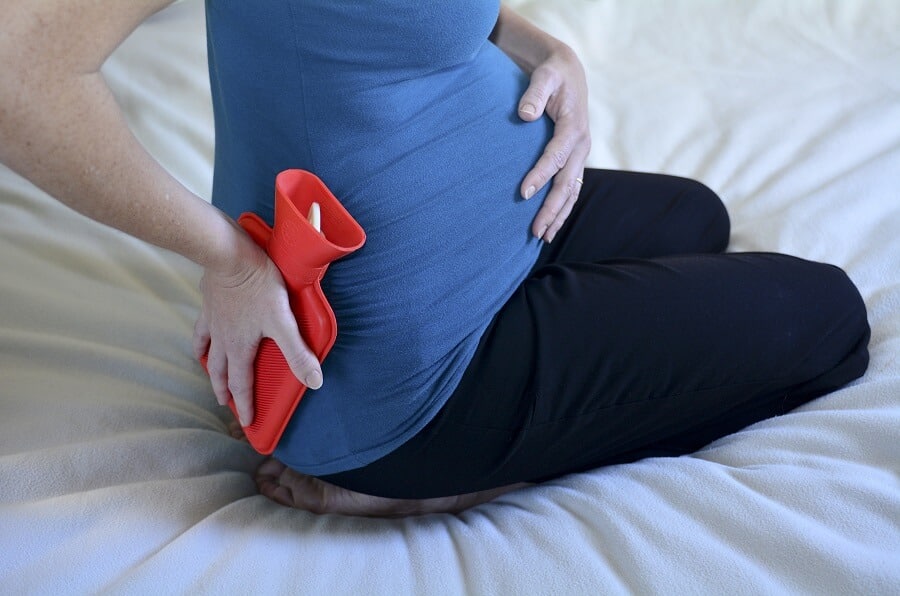California’s Pregnancy Disability Leave, FMLA, and Paid Leave; An Overview for HR

Pregnancy Disability Leave in California
California is one of the few states that offers both a pregnancy disability leave and a family medical care leave for employees. In many cases, the protected leave can combine with paid benefits and the employee can have supplemented income while on leave. In other cases, the California protected leave is in addition to the Federal FMLA leave.
The purpose of this article is to provide an overview of the California Pregnancy Disability Leave Act and how it works independently or in conjunction with the Federal FMLA laws. In addition, this article will give an overview of the Pregnancy Disability Insurance, and the Temporary Disability Insurance Programs.
Employers who are seeking information on how California’s Family Rights Act corresponds with the Federal FMLA laws should read California’s FMLA: The Family Rights Act and the Federal FMLA, an Overview.
Employers can also read the guide on California Sick Leave Laws or Kin Care for additional information on two more acts that create protected leave for employees.
California has some of the highest numbers of employment laws governing protected leave in the U.S.A. Employers in California must balance between both State and Federal laws. In addition, many of California’s cities have local, and often overlapping, sick leave, advanced scheduling and minimum wage laws that govern employees. In addition, many of those laws have some of the highest penalties for employers in the country. That is only one many major reasons that SwipeClock’s advanced software provides becomes so crucial for employers. It helps business to stay compliant and maintain their bottom lines. It can make a difference of thousands of dollars in penalties and fines.
Pregnancy Disability Leave Act Overview
California Provides a protected, but unpaid leave for women who are unable to perform their work duties due to conditions related to pregnancy. Nearly all employees are covered by the act. Any business that has 5 or more employees must provide Pregnancy Disability Leave (PDL) to their employees. The only exception to this rule is non-profit businesses or religious organizations, which are exempt.
Unlike California Family Rights Act (CFRA) or the federal Family Medical Leave Act (FMLA), there are no requirements that the employee is employed for a certain amount of time or have worked a minimum number of hours. Therefore, new employees are immediately eligible for the leave. This is different from FMLA and CFRA, both of which require a total of 12 months employment and 1,250 hours worked in the previous year.
The Pregnancy Disability Leave Act provides up to 4 months of protected leave which boils down to 88 work days or 122 calendar days. PDL taken by employees does not count concurrently with CFRA leave because CFRA leave does not include pregnancy-related disability.
However, PDL leave can often run concurrently with FMLA leave. If the employer and employee qualify under FMLA, then leave can be taken concurrently. It is important that the employer notify the employee at the beginning of the leave that the employee’s leave will count toward PDL and FMLA simultaneously. If the employer does not find out the reason for the leave until the employee returns to work, then the employer must immediately inform the employee that the leave taken counted toward both laws. Otherwise, the employer cannot retroactively apply to leave taken.
Pregnancy Disability Leave provides time for each pregnancy. Therefore, if an employee is pregnant twice during the year, they are eligible for PDL two times.
In addition, PDL can be taken before or after birth if the disability is related to the pregnancy.
Acceptable Reasons for Leave under Pregnancy Disability Leave
Pregnant women can take leave for any disability that is related to her pregnancy. This includes if the employee is unable to perform her essential job duties due to the disability or if those job duties would place her or her pregnancy at risk. In addition, if the employee performing those duties places anyone else at risk, she is also eligible for PDL.
- Unable to perform essential functions of her job, or to perform the functions without undue risk to herself, her pregnancy’s successful completion, or to others
- Suffering from severe morning sickness
- Needs to take time for prenatal care, postnatal, bed rest, gestational diabetes or pregnancy-induced hypertension or preeclampsia
- Postpartum depression, childbirth, loss or end of a pregnancy, or recovery from childbirth,
Employers are allowed to request a medical certification if the employee is disabled.
Pregnancy Disability Leave Independent of FMLA
There are some situations when Pregnancy Disability Leave would not count concurrently with the federal Family Medical Leave Act. One example is if the employee is a new employee and has not met the requirements for FMLA leave because she either hasn’t worked at least 12 months for the employer or hasn’t worked at least 1,250 hours in the previous 12 months.
Another example is if PDL is taken during a period when the employer doesn’t yet qualify under FMLA. If the employer then passes the 12-month mark when they qualify as an employer with 50 employees in a 75-mile radius, the employee could then become eligible for FMLA leave. Even if the employee had just taken PDL prior to the employer qualifying, the employee would then be eligible for FMLA leave.
Temporary Disability or State Disability Insurance
California provides a Temporary Disability Insurance Program (TDI) to supplement employee’s income who become disabled due to a non-work related condition. TDI falls under the State Disability Insurance (SDI) and offers a Pregnancy Disability Insurance as part of the program. Employers can choose to participate in the State’s TDI program or a private, approved plan. The benefits available under both TDI and Pregnancy Disability Insurance are wage benefits. Neither program provides protected leave as part of the benefit. If the employee is taking CFRA leave, FMLA or PDL during the time they are receiving the TDI benefits, their leave is protected.
Employees who continue to be on leave after their CFRA, PDL, or FMLA leave expires do not continue to have job protection.
Qualifying for TDI
TDI covers all employers who have at least 1 employee. Employees become eligible for TDI when they are unable to work for at least 8 days or more. They must be either currently employed or actively looking for work when they become disabled.
In addition, the employee must have earned at least $300 in income and paid into SDI out of that income.
In order to qualify for TDI, the employee must be under the care of a healthcare provider. Employees can receive supplemental wages for up to 52 weeks.
In addition, when the employee receives income that matches what they made during their base period, the TDI will stop, even if it is less than 52 weeks of supplemental wage. The base period is the 17 months prior to the employee’s disability, subtracting the previous 5 months immediately before the disability occurred.
The maximum weekly benefit for TDI is $1,173 each week or up to 55% of the employee’s regular wages, whichever is less.
Employers don’t have to administer the approval, paperwork, or payment of TDI unless they offer a privately held TDI. However, it is important for employers to understand how TDI works and to inform employees of benefits available under TDI.
Pregnancy Disability Insurance Overview
Pregnancy Disability Insurance is a branch of TDI. It provides up to 4 weeks of disability wage supplement during pregnancy. In addition, employees can get another 6 weeks of wage supplement after the birth of a child. In some cases, such as a cesarian, employees can get pregnancy disability insurance longer.
Just like TDI, wages are supplemented at 55% of the employee’s regular wages.
California’s Paid Family Leave
The paid family leave offered through the state of California provide up to 6 weeks to bond with a new child or to help care for a family member who is seriously ill. Paid Family Leave is in addition to Pregnancy Disability Insurance so a new mother who was disabled and received 4 weeks of benefit before the birth of her child and 6 weeks after the child’s birth would also be eligible for another 6 weeks of bonding leave.
Paid Family Leave requires a certification of the family member’s serious illness or injury or of the birth, adoption or foster care placement of a child into the home. In addition to the ability to care for children and parents, Paid Family Leave also provides benefit for employees to care for their parents-in-law, grandparents, and grandchildren.
Family Rights Care Act and other Protected Leaves
In addition to the Pregnancy Disability Leave Act, California also has it own FMLA law. Its called the California Family Rights Act (CFRA) and it provides leave for employees who need to take time to care for a family member with a serious injury or illness or who want to bond with a new child. CFRA does not provide disability leave time, although California law includes a paid sick leave law and the PLD.
In addition, California law also provides protected leave of up to 10 days for victims of domestic violence or sexual assault.
Military spouse leave provides up to 10 days when an employee’s spouse is deployed on active duty and allows the spouse to take time off when the military personnel is also on leave.
California’s drug or alcohol rehab leave doesn’t provide a specific number of days, but provides a ‘reasonable’ leave for the employee to attend a drug or alcohol rehab program.
Let SwipeClock Help
Businesses in California have to abide by many leave laws, both local and statewide. These employers have to monitor sick leave accrual, ensure compliance and tracking of the appropriate leave laws, and depending on their location, have to comply with secure scheduling laws.
Additionally, these businesses have to also comply with Federal Overtime Laws, the Family Medical Leave Act, Affordable Care Act and any other national or local laws that are enacted. SwipeClock provides a comprehensive array of workforce management and time tracking tools that can help businesses to more easily stay in compliance with local and national laws.
Records are effortlessly kept for years and accrual is automatically tracked and reported to employees according to the state and city laws. Additionally, with geo-timekeeping clocks, businesses can effortlessly track time worked in specific cities to ensure compliance.
Resources
California Comparison of FMLA, CFRA, and PDL
Pregnancy Disability Leave FAQ
Written by Annemaria Duran. Last updated June 20, 2017
Simplify HR management today.
Simplify HR management today.
Your Guide to GPS Time Tracking (Geofencing)
Updated March 19, 2024 When your business has employees working remotely or at various job sites, time tracking can become a challenge, particularly if the company relies on physical clocks for punching in and out. But offering a mobile app or web-based tracking solution can cause some concerns. You might wonder whether employees are clocking…
Read MoreThe Employer’s Guide to Federal & State Meal/Rest Break Laws [See all 50 State Laws Here]
Updated January 23, 2024 Under the federal Fair Labor Standards Act (FLSA), employers are not required to provide meal or rest break periods to employees. However, some states do have laws in effect dictating when and how often an employee should receive a break, as well as whether these breaks are paid or unpaid. In…
Read More




